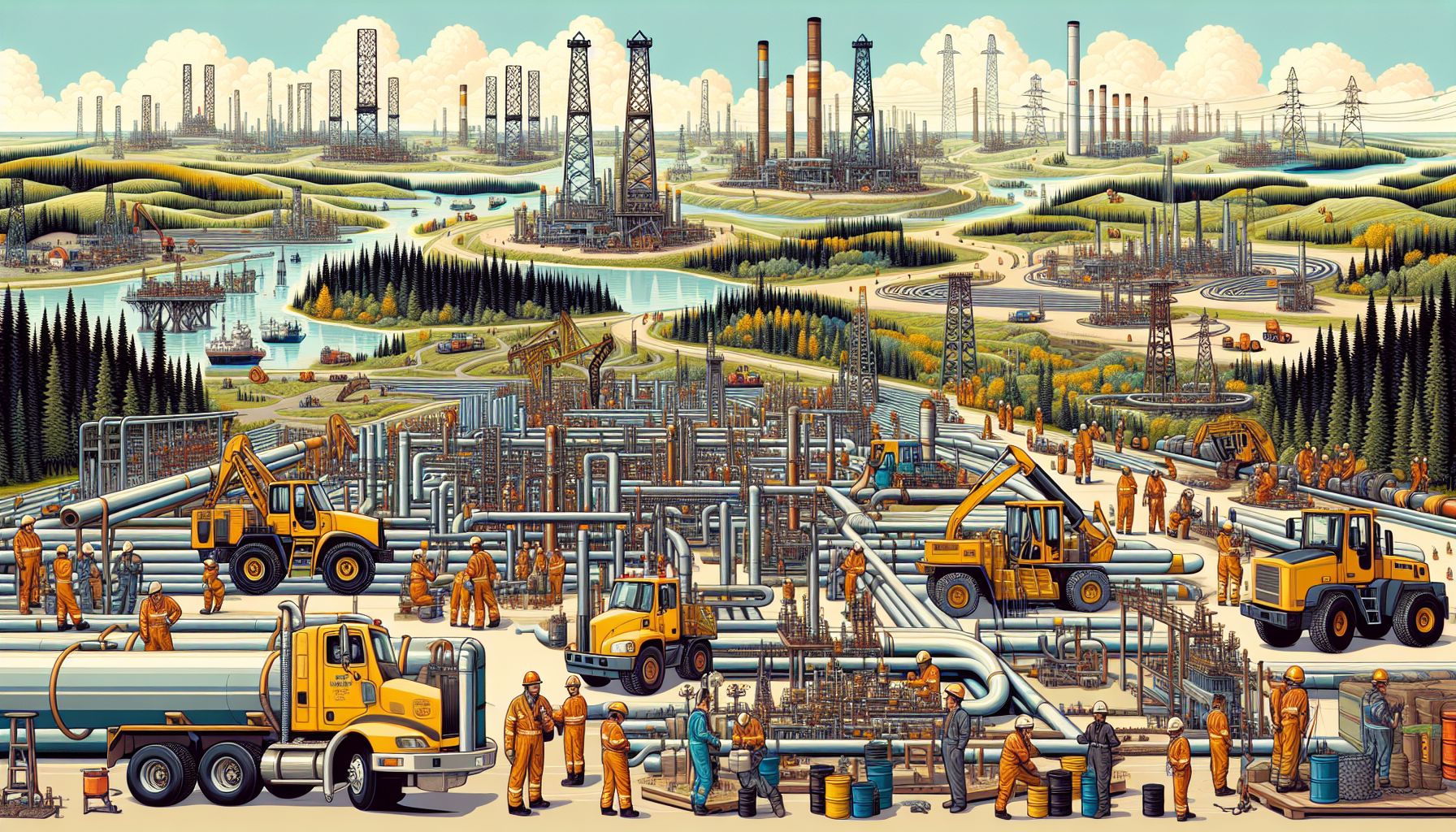
Canada’s oil and gas industry is a vast and complex web of operations that spans across the country, from the remote oil sands of Alberta to the bustling refineries of Eastern Canada. It is a crucial part of the Canadian economy, providing jobs and revenue to countless communities. In this blog post, we will delve into the intricacies of this industry, exploring some of the key players, challenges, and opportunities that define it.
One of the largest players in Canada’s oil and gas industry is the province of Alberta, home to the famous Athabasca Oil Sands. These deposits contain some of the largest oil reserves in the world, making Alberta a significant player on the global stage. Companies such as Suncor Energy, Canadian Natural Resources, and Imperial Oil have major operations in this region, extracting oil from the sands through a process known as steam-assisted gravity drainage.
Despite its importance, the oil sands have been a source of controversy in recent years due to their environmental impact. Critics argue that the extraction process is energy-intensive and produces large amounts of greenhouse gas emissions, contributing to climate change. In response, the Canadian government has implemented regulations to reduce emissions and encourage companies to develop cleaner technologies.
In addition to the oil sands, Canada’s oil and gas industry also includes offshore drilling in the Atlantic and Pacific Oceans. Companies such as Husky Energy and Suncor have operations off the coast of Newfoundland and Labrador, while British Columbia is home to the growing liquefied natural gas (LNG) industry. These regions offer new opportunities for investment and growth, but also present unique challenges in terms of environmental protection and Indigenous rights.
Another key aspect of Canada’s oil and gas industry is its transportation infrastructure. The country relies heavily on pipelines to move oil and gas from production sites to refineries and export terminals. The Trans Mountain Pipeline, for example, carries oil from Alberta to the West Coast, while the Line 5 pipeline transports oil from Ontario to the United States. These pipelines are critical to the industry’s success but have also been a source of controversy and conflict with Indigenous communities and environmental activists.
In recent years, the oil and gas industry in Canada has faced a number of challenges, including fluctuating oil prices, regulatory uncertainty, and growing opposition from environmental groups. The COVID-19 pandemic has also had a significant impact, leading to a drop in demand for oil and gas and forcing companies to cut jobs and reduce production. Despite these challenges, the industry remains resilient and adaptable, with many companies investing in new technologies and strategies to reduce their environmental footprint and ensure long-term sustainability.
In conclusion, Canada’s oil and gas industry is a multifaceted and dynamic sector that plays a crucial role in the country’s economy. While it faces a number of challenges, including environmental concerns and regulatory obstacles, it also presents significant opportunities for growth and innovation. By embracing change and adopting sustainable practices, the industry can continue to thrive and contribute to Canada’s prosperity for years to come.







